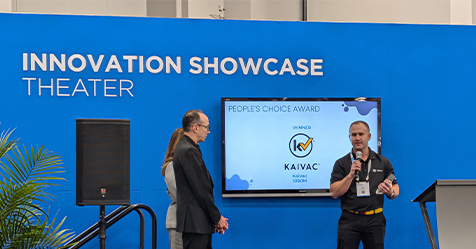The key to handling emergencies—especially in areas prone to natural disasters like hurricanes—is to have a thorough plan in place to prepare for and effectively respond to the situation. Minimizing the impact of the damage, achieving a fast recovery, and ensuring the safety of those on site should be the main goals.
Efficiency is key, as companies can experience significant financial losses during downtime while recovering from an emergency. Depending on the company’s size, that loss could amount to
thousands of dollars per minute on average.
Remediation and restoration are crucial components of the response in the aftermath of an emergency. During this critical time, you need to assess damage while preventing further loss. A rental solutions provider can help you manage large projects to support your plan’s execution and get your business up and running again.
Choose a plan
You’ll need to determine the type of emergency preparedness plan that best suits your situation and the equipment that will meet your needs. In addition to assessing the site and damage to
implement restoration efforts, your emergency response will include understanding any emergency equipment that you have rented and how to operate it safely.
As no two companies’ emergency response plans are the same, rental solutions providers offer a variety of options. You may choose to develop a contingency plan, especially if your location is susceptible to natural disasters. A contingency plan guarantees the availability of specific types and amounts of rental equipment during an emergency. This plan involves a low upfront fee and ensures that the rental solutions provider will deliver the equipment within a designated timeframe from the request.
Standby rental plans are also an option year-round or during specific seasons. The rental solutions provider will secure power generation equipment, either at the facility or at a local rental
location, for a fixed cost and standby-rate structure. A third option is a site-specific plan, in which the rental solutions provider will determine power and equipment needs based on an assessment of the facility. The provider will tailor the plan to your facility’s needs and budget at the time of order.
Whichever plan you choose, taking a proactive approach to emergency preparedness sets the foundation for a successful recovery. First, work with your rental solutions provider to identify
potential risks associated with your facility and location and consider the various impacts of an emergency. Doing so will help you prioritize response efforts and develop an approach to
minimize downtime.
Next, select trained personnel to oversee the emergency. Train them to use rental equipment that has been secured for the emergency response confidently and safely. Establish a clear plan for
communicating protocols to deploy and use the rental equipment during the emergency to ensure a smooth recovery process.
As safety is paramount, it is essential to provide on-site workers with the proper personal protective equipment (PPE), including respirators, gloves, and protective clothing.
Consider your equipment options
Finally, determine the specific equipment you need to help your company face and recover from a natural disaster. Consider the following key pieces of rental equipment to include in your emergency plan:
- Power providers: Supplying power to an affected site is among the most important factors to consider after a disaster, as outages are prevalent and can have a significant impact on your company. Diesel generators are a common piece of equipment rental solutions providers offer; however, the option of powering a site with a battery energy storage system (BESS) also is available. These systems provide clean, nearly silent power generation. Rental solutions providers also offer accessories, such as transformers and fuel tanks, as part of their power solutions.
- Heating, cooling, and air management systems: Portable air conditioners and heaters are essential pieces of equipment to rent in the event of a disaster and a subsequent failure of an HVAC system. Dehumidifiers and air purifiers help keep indoor air clean, safe, and comfortable. Other equipment options, such as portable and industrial refrigerant dehumidifiers, desiccant dehumidifiers, hybrid cooling units, and air circulators, will assist in efficiently drying buildings or materials.
- Dewatering pumps: These pumps can quickly remove excess water after a flood.
- Temporary structures: As part of your emergency preparedness plan, consider including temporary structures to provide shelter for those involved in the remediation and restoration. These structures can serve as command centers, sanitation areas, medical treatment centers, and more.
- Lighting: Portable light towers, including solar models, can help you and your team effectively complete recovery tasks by providing a safe, well-lit space in the event of power outages.
- Heavy equipment: Remediation workers often need forklifts for debris and material removal. Mobile elevated work platforms (MEWPs), such as boom lifts, can help repair damage at heights or in hard-to-reach areas. Note that operating this equipment requires trained and certified personnel.
- Ground protection equipment: Ground protection mats and temporary road plates can protect against damage from forklifts and other heavy equipment used during cleanup. It also provides a safe, stable surface on which personnel can walk. You also may need temporary scaffolding to help you repair, clean, or restore portions of your facility. Flooring solutions, such as floor scrubbers, are also a good rental option should a facility have water damage or a buildup of debris.
Deploy an effective response
Once a disaster has occurred, it is time to deploy your emergency response plan. After ensuring the safety of all personnel, contact your rental solutions provider immediately to guarantee that
the emergency response equipment you have on hold is delivered promptly. In an ideal situation, you will have been warned of an impending natural disaster and have your rental equipment
in place ahead of time.
Assess the extent of the damage and any risks that need immediate attention, prioritizing them according to their severity. Look for solutions to limit any further damage to your facility, such as
clearing away debris that could damage windows. Alternatively, you may need to take steps to eliminate secondary hazards, such as an unstable structure. The goal is to contain the damage’s
impact so that it doesn’t spread further.
To create a healthy environment, clean and decontaminate necessary areas. Repair or replace damaged systems or infrastructure so that you can restore critical elements of your business.
Throughout all the response efforts, communicate clearly with your personnel and your rental solutions provider. If requested, the provider can be on-site working beside everyone to expedite a smooth remediation and restoration.
Remember to document all repairs and costs and to work with your insurance carrier to process claims. Once everything has settled, coordinate with your rental solutions provider to review your emergency response plan. Together, you can assess what equipment and processes worked best and determine which need to be updated in preparation for any future emergencies.




